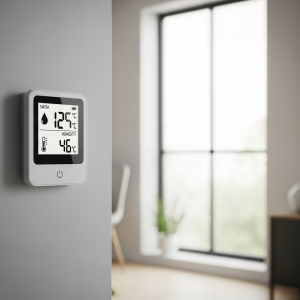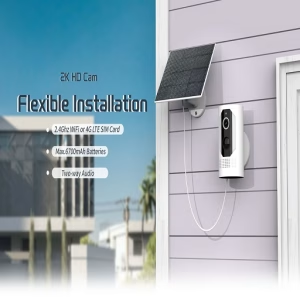AI Smart Home Gateway Control Types and Protocols: A DIY Guide
Understanding Smart Home Gateways
A smart home gateway is the central hub of your smart home system. It connects various smart devices, such as lights, thermostats, and security systems, to a single network, allowing you to control them remotely using a smartphone app or voice commands.
Types of Smart Home Gateways
- Standalone Gateways:These are dedicated devices designed specifically for smart home control. They often have built-in features like voice assistants, security systems, and home automation capabilities.
- Smart Speakers:Devices like Amazon Echo or Google Home can act as gateways, controlling other smart devices through voice commands.
- Home Hubs:These devices, such as Samsung SmartThings Hub or Wink Hub, are designed to connect and control a wide range of smart devices.
Key Protocols for Smart Home Gateways
To provide a clearer comparison of different protocols, we have compiled the following table:
| Protocol | Advantages | Disadvantages | Suitable Applications |
| Wi-Fi | High speed, wide coverage, easy to configure | High power consumption, relatively low security | Large data transmission, high-definition video transmission |
| Zigbee | Low power consumption, strong networking capabilities, strong anti-interference ability | Limited transmission distance, low speed | Sensor networks, smart switches |
| Z-Wave | High security, reliability, and anti-interference ability | Limited transmission distance, high cost | Smart home control, home automation |
| Bluetooth | Low power consumption, easy to pair | Short transmission distance, limited bandwidth | Pairing smartphones with devices, short-range control |
| Thread | Low power consumption, high speed, reliability | Immature ecosystem | Smart home, Internet of Things |
| Matter | Unified standard, strong interoperability, high security | Ecosystem is still under construction | Future smart home standard |
How to Choose the Right Gateway
- Compatibility:Ensure the gateway supports the protocols used by your smart devices.
- Ease of Use:A user-friendly interface and app are essential for easy control.
- Security:Look for strong security features to protect your smart home network.
- Future-Proofing:Consider a gateway that supports emerging standards and protocols.
- Cost:Evaluate the initial cost of the gateway and any ongoing subscription fees.
DIY Smart Home Gateway: A Challenging Endeavor
While it’s possible to build a DIY smart home gateway, it requires significant technical knowledge and expertise. It’s generally easier and more reliable to purchase a commercial gateway.
However, if you’re determined to build your own, here are some key considerations:
- Hardware:You’ll need a suitable microcontroller or single-board computer, such as a Raspberry Pi, along with necessary sensors, actuators, and wireless modules.
- Software:You’ll need to develop or use open-source software to control the hardware and communicate with smart devices.
- Networking:You’ll need to configure the network settings and ensure secure communication.
In Conclusion
Choosing the right smart home gateway is crucial for a seamless and secure smart home experience. By considering factors like compatibility, ease of use, security, and future-proofing, you can select the best gateway for your needs. While DIY options are available, they require significant technical expertise. For most users, purchasing a commercial gateway is the most practical and reliable solution.




